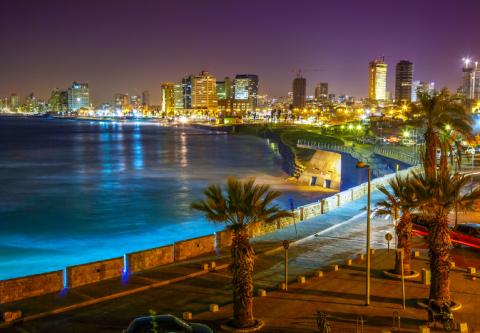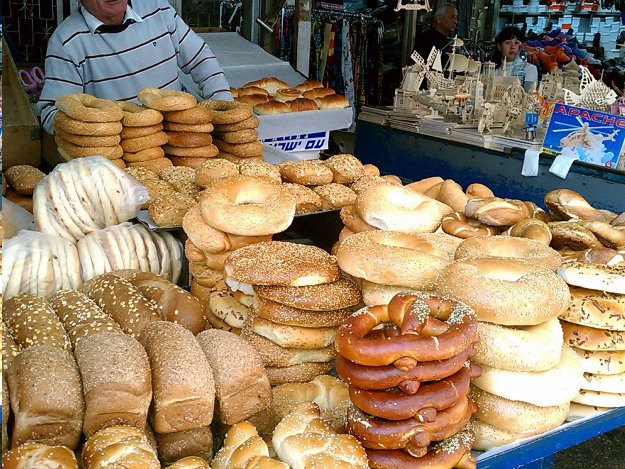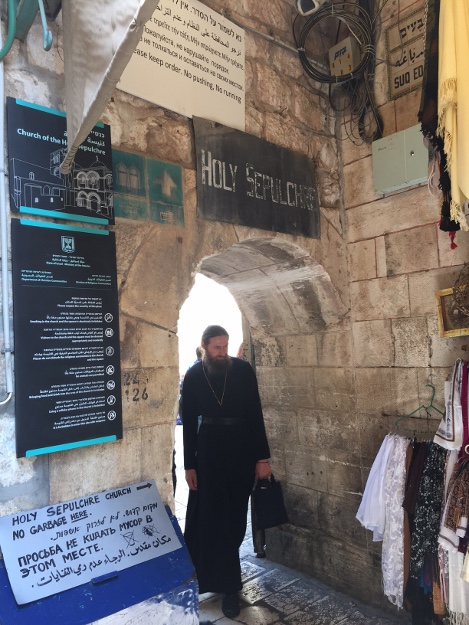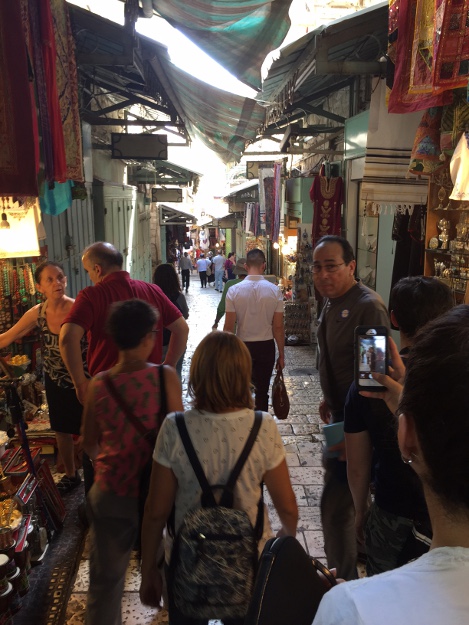Balancing Fear and Freedom in Israel

In every city throughout the world, streets are filled with people going about their daily lives—adults going to work, children going to school, and everything that goes along with that. There is traffic, inclement weather, crowded public transport, and many other obstacles that challenge our routines.
What is different from city to city is geography, or more specifically, the context of the location of each city. In many parts of the world, people can leave their houses without fear of anything bad happening to them, aside from a freak accident or possible random act. But in some places, citizens have no choice but to try and live their lives amidst a climate of fear and violence from sources both internal and external. One only has to watch the evening news to know that one such place is Israel; not only is Israel geographically situated in the most volatile region in the world—it is also embroiled in a decades-old (some would argue centuries-old) internal conflict between Israelis and Palestinians. As a result, the concepts of daily life and routine take on an even greater significance in a place like Israel, where its people are all too aware of how unstable the world around them is.
The gateway to Israel for visitors is the city of Tel Aviv on the western coast, situated on the far eastern border of the Mediterranean Sea. Although not the most populous city in Israel, Tel Aviv is, by far, the most cosmopolitan and worldly city in a country mired in its history. Additionally, Tel Aviv comes across as the most secular place in a country founded on religion—a country with tremendous significance for all of the world’s major religions. Despite this, it is not uncommon for businesses all over Israel, including in Tel Aviv, to close Friday evening and reopen Saturday evening in observance of the Jewish Sabbath, as well as holidays.
Yom Kippur will even see a complete shutdown of Tel Aviv’s airport, with no flights allowed in or out. With all that being said, Tel Aviv and its citizens seem more concerned with quality of life—time spent socializing with friends over drinks and tanning on the beach—than the seemingly endless religious and territorial conflict that surrounds them not only in Israel, but in the entire Middle East region.
Tel Aviv is not immune, however, to the problems that seem to have no resolution. Recent news reports have focused on a wave of seemingly random knife attacks with what appears to be a religious motivation, more specifically, a supposed retaliation by Palestinians against Israelis for perceived injustices. In addition, a lone gunman was captured on film opening fire on a crowded bar, killing two civilians and wounding several others shortly before the end of the year. These events, as well as many others over the years, keep the people of Tel Aviv in a perpetual state of alertness. A visitor to Tel Aviv, however, will never see this. Walking the streets, eating in the restaurants, lying on the beach—daily life in Tel Aviv is permeated with a normalcy that makes it easy to forget that it is surrounded by a virtual war zone. Aside from the security at the airport, for flights both entering and departing Israel (describing it as extensive might be diplomatic but also an extreme understatement), someone who fails to venture outside of Tel Aviv will probably be hard-pressed to fully understand the reality of the place they are in, as the security measures protecting against terrorism only become evident when leaving the city.

While choosing not to leave Tel Aviv would make any trip to Israel incomplete, there is plenty there to keep a visitor occupied. A student of architecture can conceivably spend days wandering the streets studying the buildings—known as the White City of Tel Aviv, this title refers to a collection of over 4,000 structures built in the Bauhaus style, the largest number located in one place in the world. This area was designated a UNESCO world heritage site in 2003. Additionally, the aforementioned beach extends down the western border of Tel Aviv, with the bronze and beautiful sunbathers making people-watching a virtual occupation. There are markets and shopping malls, and almost every restaurant is required to have outdoor seating, as the year-round temperate climate makes dining outside a constant option. To end the day, nightlife in Tel Aviv is the best in Israel, with young Israelis known to party until the wee hours of the morning.
Approximately one hour’s drive from Tel Aviv is the city of Jerusalem, Israel’s most populous city. If there is one place on earth where all of the world’s major religions converge, Jerusalem is it. Modern Jerusalem is actually quite large, but the focal point of all religious observation takes place within the walls of the Old City. The site of the greatest historical and religious significance in Israel, the Old City is divided into four sections known as quarters: the Armenian, Jewish, Muslim, and Christian. Traveling between the quarters sometimes requires passing through a security checkpoint, and rarely do members of one religion venture out of their respective sections—to do so is allowed, but might be met with some difficulty. Pilgrims from all over the world flock to this part of Jerusalem to visit such sites as the Western (or Wailing) Wall and the Church of the Holy Sepulchre, believed to be the actual place of Jesus’ crucifixion. Both Palestinians and Israelis declare Jerusalem to be their capital, which barely scratches the surface of understanding the reason for the conflict between the two groups.

Depending on whom you ask, outsiders will likely get a hundred different answers to the question of the reason for the hostility between the Israelis and Palestinians. Many will say it is fundamentally a battle over territory, as both groups lay claim to the land within Israel’s borders as their ancestral homeland. Over the years, however, the conflict has evolved into something much deeper and more complicated. The Israeli government has relegated the Palestinians to a small area of land in Gaza, as well as the West Bank, which includes the cities of Jerusalem, Ramallah, Jericho, and Bethlehem.
To further intensify the situation, Israel has erected a wall separating the parts of the country that it has forced the Palestinians to occupy from the rest of the disputed land, restricting movement by Palestinians between both sides of the wall. In retaliation, it is not uncommon for Palestinians to attack Israeli citizens and soldiers, either in random attack or with artillery power, which is then counter-attacked by the Israeli government, creating a seemingly neverending cycle of war and violence. It is in this atmosphere that the people living here—both Israeli and Palestinian—must go about their daily lives, trying desperately to achieve a level of stability in the midst of a climate of fear.
Compounding these difficulties, Israel is geographically located in the most volatile region in the world, and its diplomatic relations with its neighbors are less than favorable. El Al, the national airline of Israel, is forced to fly around some of the surrounding countries en route to some of its destinations, making flight times unnecessarily longer, as a result of the hostility between Israel and other countries in the region.
Despite this, Israelis and Palestinians still manage to eke out a considerably normal existence, albeit one that is periodically disrupted by spikes in violent outbreaks between both individuals and militaries. It might perhaps be a successful example of compartmentalizing, with citizens refusing to dwell on the possibility of danger lurking around every corner. Whatever the explanation, the beauty and history of this unique place will continue to be a draw for visitors from all over the world, and the people that live there will continue to welcome them, allowing them a glimpse into what it is like to live in a place riddled with conflict, while still managing to maintain the normal aspects of everyday life, dreaming of a time when war and animosity becomes just another part of their rich history.

Author Bio:
Michael Verdirame is a contributing writer at Highbrow Magazine.
Highbrow Magazine
Photo credits: Depositphotos.com; Michael Verdirame.




























































































































































































































































































































